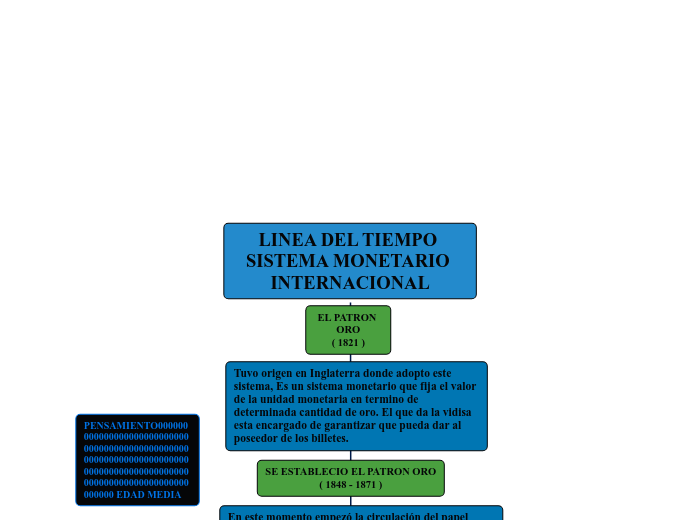ELEMENTOS TEORICOS Y METODOLOGICOS DE LA O.E
To name your story, you have to think about the overall message and what you want your audience to understand from the story. Also, make it relevant and easy to remember.
Arencibia Arencibia, J. S. (2002). Modelos de orientación e intervención psicopedagógica. Las Palmas: Universidad de las Palmas de Gran Canaria.(Manuales Docentes de Psicopedagogía).Pág. 33-37, 40-42.
LA ORIENTACIÓN EDUCATIVA, FUENTES Y DISCIPLINAS.
The middle of the story is where you add layers of complications that will lead to the end. Reveal more about the character's journey. Did their personality go through changes? How did they overcome the challenges? And as you build up the story’s central conflict, make it more personal to that character. Also, from the middle act, you have to lead into the final act.
Cesar Coll (1989).
There wouldn't be any tension and excitement in your story if there weren't any obstacles in your character's way.
Pedagogia.
Psicología
A story is nothing more than a character overcoming a series of difficulties to reach the desired goal. Obstacles usually create suspense and conflict. In overcoming obstacles, there is growth: weak becomes strong; hatred turns into love; sadness into happiness; wrong into right; lies into truth; or evil becomes good.
See a few examples below:
- stopping a meteor
- finding a killer
- finding love
Bisquerra (1996).
Your character(s) need(s) motivation in order to solve the challenge(s).
Didáctica.
Psicología de la Educación.
Secondary characters might also have motives that lead them to cross paths with the main character or which might trigger them to help the main character.
Educación especial.
Secondary characters also might have motivs beacuse of which they may cross path with main character or which might trigger them to help the main character.
Orientación Vocacional
Why does your character need to confront this challenge? What does he/she expect to accomplish by solving it?
See a few examples:
- will marry in 3 days
- can fix the mistakes of the past
Repetto (1924).
Each story has a main character and that character usually needs to solve a problem or challenge. The character's challenge is the one that creates tension throughout the story.
Sociolingüística
Trabajo social
Asistencia
Psiquiatria
Psicologia
In most stories, there are 3 challenges. The number 3 is a mystical number symbolizing completeness. Try to come up with interesting challenges with which your character needs to struggle.
See a few examples below:
- turns into a werewolf at night
- is sent back in time
ANTECEDENTES GÉNESIS Y DESARROLLO DE UNA DISCIPLINA.
In the beginning of the story (or the exposition), you will need to introduce the setting and characters. You might also want to introduce the main conflict. This part of the story is important because it gives the reader necessary background information and maybe even a first insight into a character’s personality.
GÉNESIS
The setting (time & place) of a story can change throughout the plot.
T.L. Kelly
Orientación pedagógica, facilita la elección de estudios.
Persons
Sensory details include sight, sound, touch, smell, and taste. These details are important because they create depth in your setting.
See a few examples below:
- the smell of fresh bread
- the scent of freshly cut grass
- rain falling onto the windshield etc.
Padre de la orientación vocacional.
J.Davis (1898).
The weather is an important element in your story because it can highly influence the ambiance and the mood of the characters.
Asesoro a los estudiantes en sus problemas educativos
Does your story include catastrophic weather? See a few suggestions below or add your own:
- hurricane, earthquake, storm, etc
E.Hazen
The time of the story can also change. It can describe the event of a single day or can include an entire year's plot. Anyway, don't forget to mention it.
Implantó un curso sobre Profesiones en la escuela
Sucedió en la Edad Media
Your story can take place wherever your imagination will take you to.
For example: in an elevator, in an enchanted forest, etc. Don't forget to give details of the environment each time the setting changes, otherwise, the story can be confusing. Also, mention the seasons as each of them has unique weather and events.
Renacimiento
ANTECEDENTES
Characters are essential to a good story. Usually, the protagonist(s) is/are the most affected by the plot. Introduce a character by focusing on their actions, interests, and occupation, as the physical appearance doesn't make a difference in most cases.
Pensadores en el fundamento de la orientación Educativa.
Karl Marx (1818-1883).
Immanuel Kant (1724-1804).
Rene Descartes (1596-1650).
Pensadores "De la actividad dar consejos".
Aristóteles
What is your character's main goal?
fight Evilfind lovedefeat his/her enemyrule the worldmake friendstime travelmake an awesome discoveryOther
Platón
Which traits best describe the character's personality? Choose more if necessary:
introvertedloyalkindindependentquick-thinkingadventuresomeidealisticsweet-naturedcalmrisk-takercreativewittystrictfussyweirdclumsyharshaggressivecarelessclingingcowardlycrueldeceitfulimpulsiveOther
Sócrates
Choose the type of your chacter:
Protagonist (main character)Antagonist (main character's opponent)Flat (stereotypical character)Round (his/ her personality develops throughout the story)Static (doesn't evolve as a person throughout the story)Dynamic (dramatical change in personality)Confidant (the main character trusts him/ her)Foil (contrasting character who enhances the personality of another character)Other
Surgió en E.U. (1908)
Type in the name of your character.
Frank Persons.
Add other qualities/attributes of the character.










